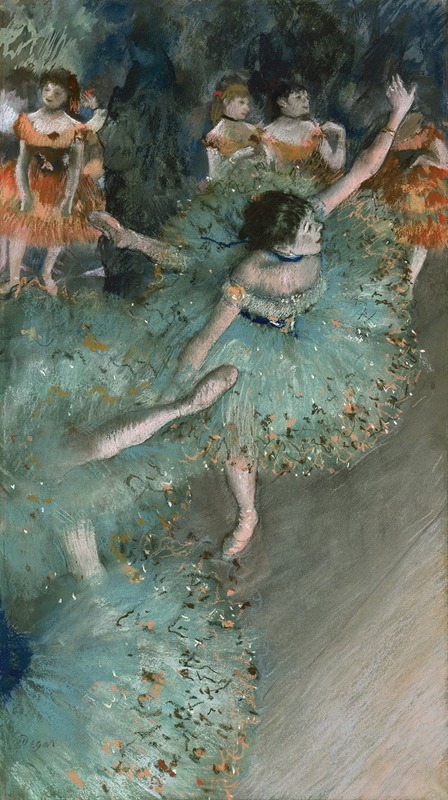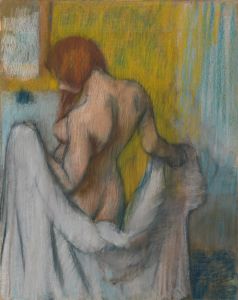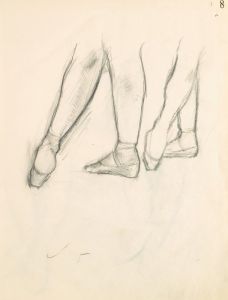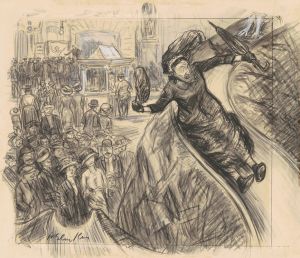
Swaying Dancer
A hand-painted replica of Edgar Degas’s masterpiece Swaying Dancer, meticulously crafted by professional artists to capture the true essence of the original. Each piece is created with museum-quality canvas and rare mineral pigments, carefully painted by experienced artists with delicate brushstrokes and rich, layered colors to perfectly recreate the texture of the original artwork. Unlike machine-printed reproductions, this hand-painted version brings the painting to life, infused with the artist’s emotions and skill in every stroke. Whether for personal collection or home decoration, it instantly elevates the artistic atmosphere of any space.
"Swaying Dancer (Dancer in Green)" is a renowned painting by the French artist Edgar Degas, created around 1877-1879. Degas, a prominent figure in the Impressionist movement, is celebrated for his depictions of dancers, capturing their grace and the behind-the-scenes reality of their art. This particular painting is a testament to his fascination with ballet and his innovative approach to composition and color.
The painting portrays a group of ballerinas in mid-performance, with the central figure, a dancer in a green tutu, caught in a moment of poised motion. Degas's use of pastel on paper gives the piece a vibrant, dynamic quality, emphasizing the fluidity and elegance of the dancers' movements. The choice of pastels allowed Degas to layer colors and create a sense of depth and texture, which is evident in the delicate rendering of the tutus and the dancers' skin tones.
One of the striking features of "Swaying Dancer" is its composition. Degas often employed unconventional viewpoints and cropping techniques, influenced by Japanese prints and photography. In this painting, he captures the dancers from an elevated angle, providing a unique perspective that draws the viewer into the scene. The asymmetrical arrangement and the off-center placement of the central dancer contribute to the sense of spontaneity and movement.
Degas's attention to detail is apparent in the meticulous depiction of the dancers' costumes and the subtle play of light and shadow. The green tutu of the central dancer stands out against the softer hues of the background, creating a focal point that guides the viewer's eye through the composition. The use of contrasting colors and the interplay of warm and cool tones enhance the overall vibrancy of the painting.
"Swaying Dancer" reflects Degas's deep understanding of the human form and his ability to convey the physicality and emotion of his subjects. His interest in capturing fleeting moments and the ephemeral nature of dance is evident in the dynamic poses and the sense of movement that permeates the painting. This work is a prime example of Degas's ability to blend realism with impressionistic techniques, creating a piece that is both lifelike and evocative.
The painting is housed in the Musée d'Orsay in Paris, which holds one of the most extensive collections of Degas's works. "Swaying Dancer" remains a significant piece within Degas's oeuvre, illustrating his mastery of pastel and his innovative approach to capturing the world of ballet. Through this painting, Degas offers a glimpse into the world of the dancers, celebrating their artistry and the beauty of their craft.


















